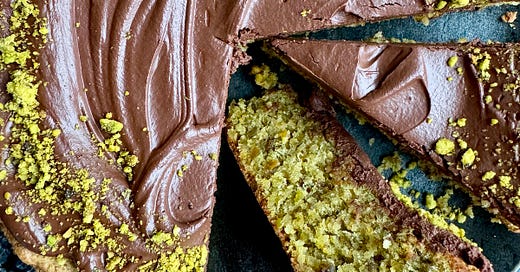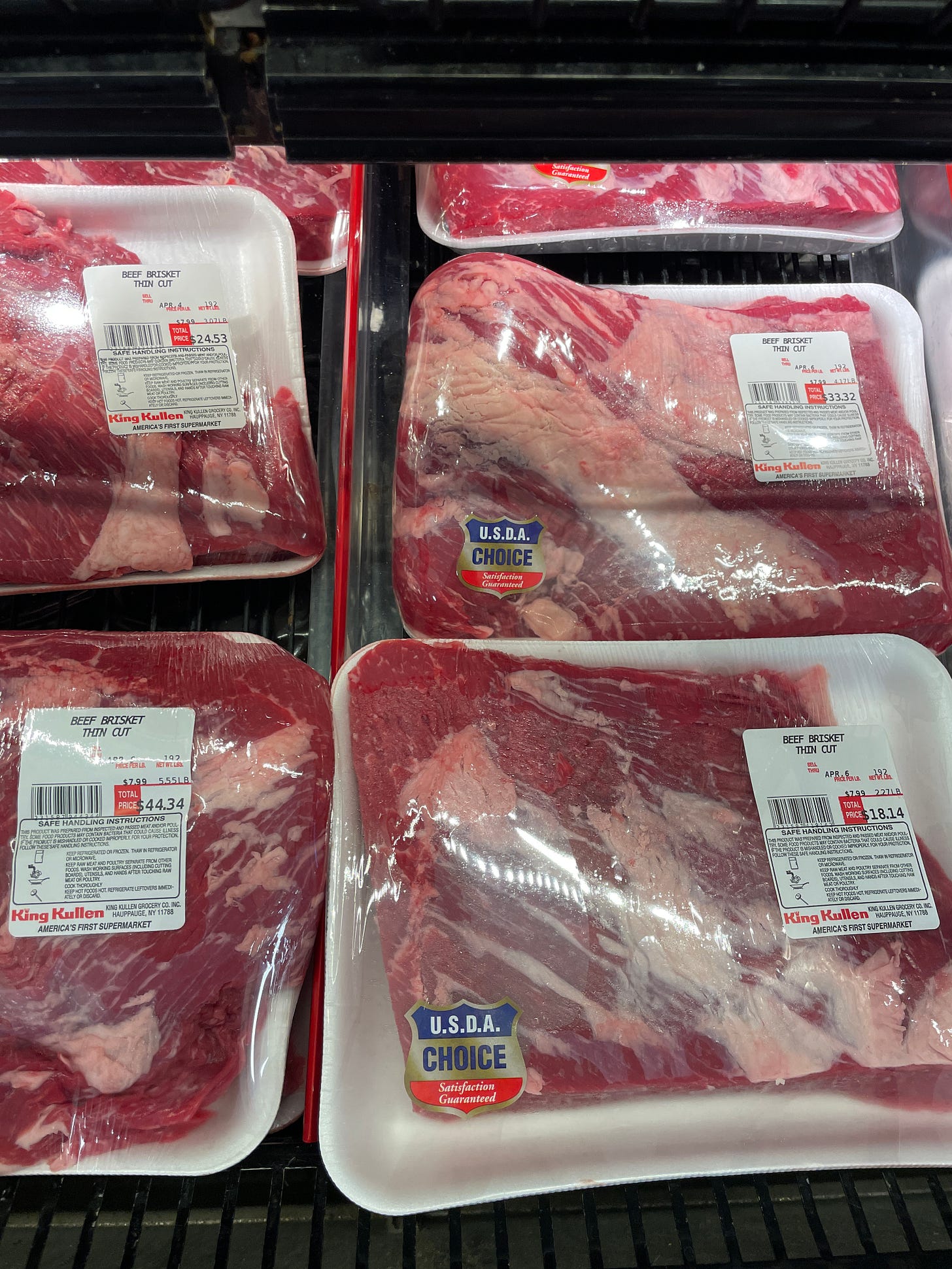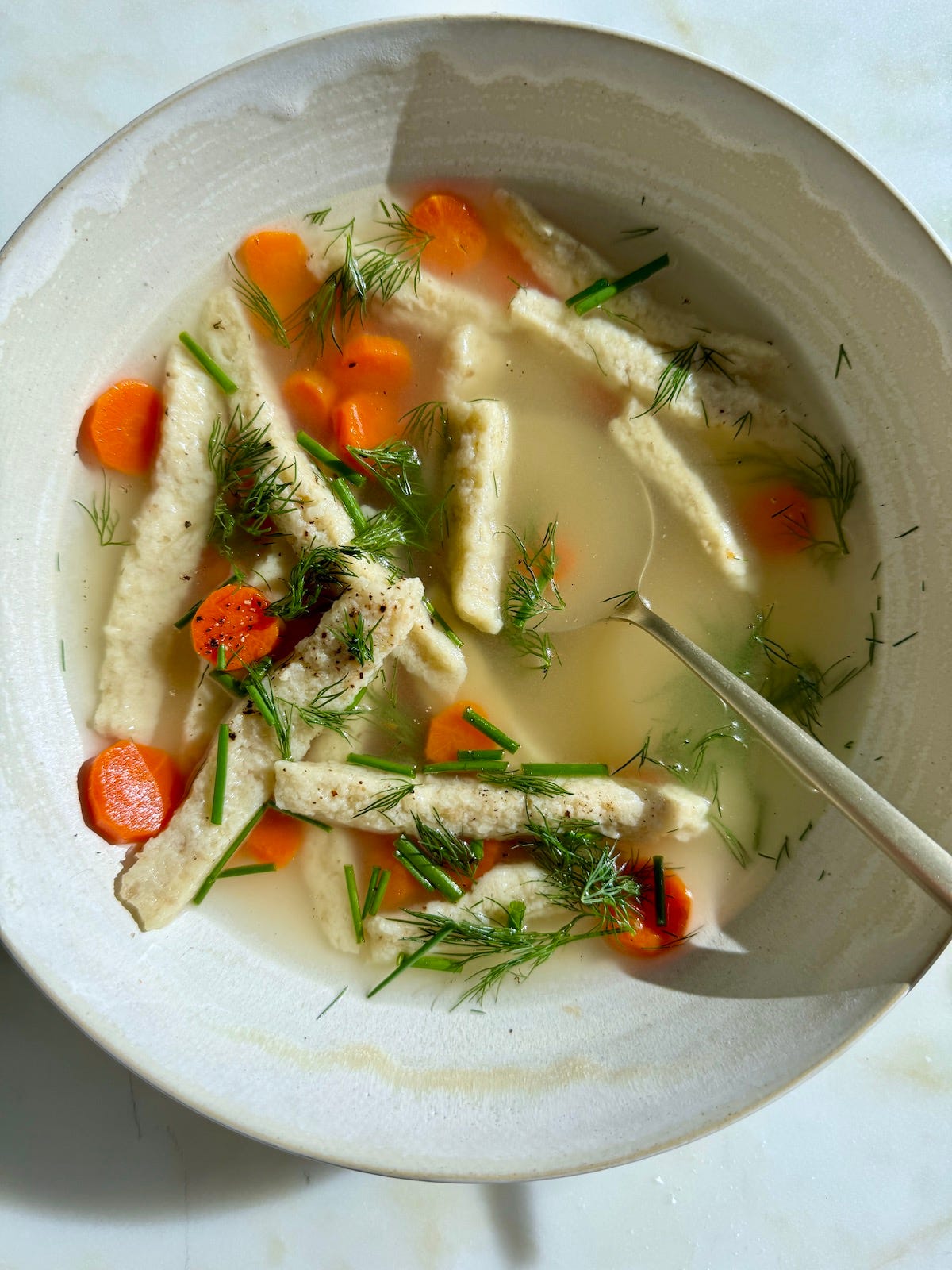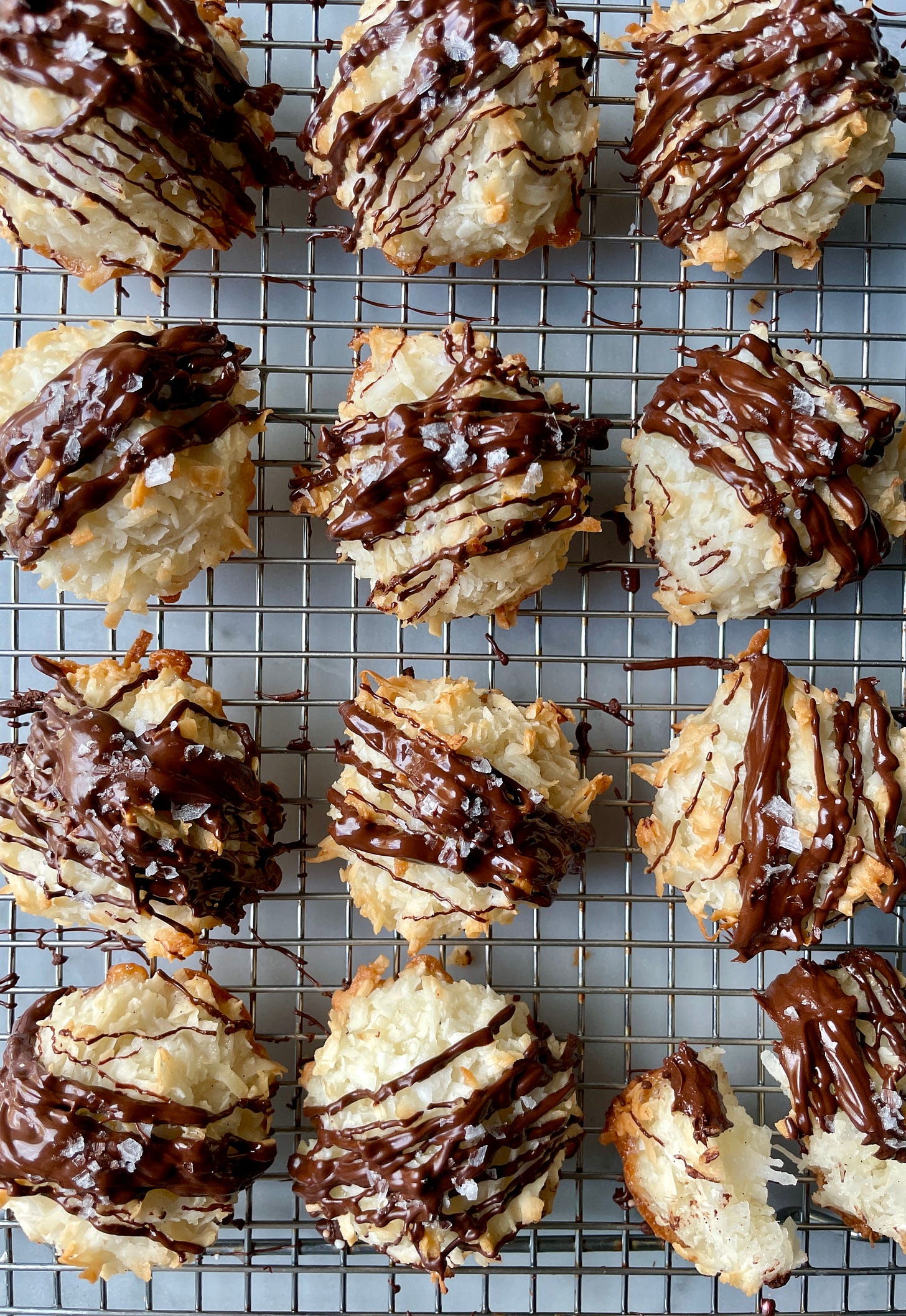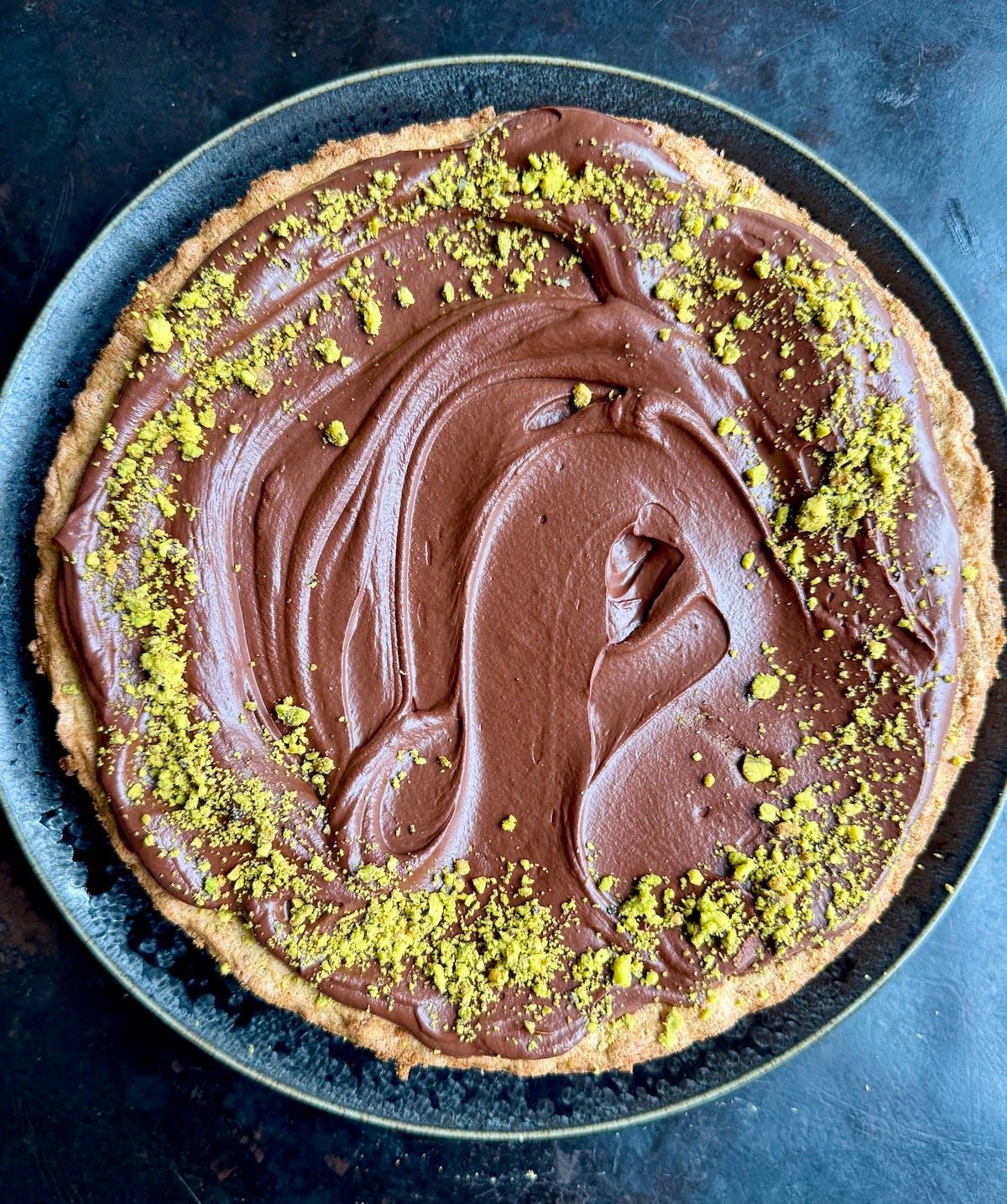Hi all! I’m doing a little spring sale in honor of the weather (finally) starting to warm up, and to give you a chance to get in on the cookbook giveaway I’m doing in next week’s paid subscriber-only post. There will be a few of those in the coming weeks. I’m offering 20% off annual subscriptions for first-time subscribers today through the end of April. Paid subscribers get access to weekly posts that include recipes, technique video tutorials, gear round ups, and more. Or take 20% off a gift subscription, which you can schedule to land in the receiver’s inbox on any date you choose (Mother’s Day is coming up!). Thank you as always for being here, and for supporting my work!
Passover desserts can sometimes be a sad affair, but they don’t have to be! While it’s true that most people are pretty full and pretty tired by the end of a long-form Seder, there’s always room for something sweet, right?
This rich pistachio and almond-based cake is not difficult to put together, keeps extremely well, and will garner oohs and aahs when placed on the table. Finishing it with an elegant swoop of ganache adds some luxury (and, well, chocolate).
While not everyone who celebrates Passover keeps kosher, desserts designed to be eaten at a Seder are usually parve. This means they don’t contain any dairy, making them “neutral” and suitable to be eaten with meals that contain meat, which this one almost always does.
If you’re invited to a Seder and want to bring something for dessert, it’s important to know the rules. To be on the safe side, keep it parve. Or just make this delicious cake! The ganache is made with coconut milk, taking the place of the typical cream. It works very well, even if it does harden a bit more than traditional ganache at room temperature. To bring it back to a softer state, set it near the warm stove or put it in a warm oven for about 5 minutes.
This cake is also incidentally gluten-free, as are many Passover desserts, which tend to be based mostly on eggs and nuts. Yes, it does take 6 pricey eggs to make this cake. But just like the upcoming holiday of Easter, eggs are an important part of the Passover meal—they symbolize renewal and rebirth, and also make up for the lack of flour and leavening in cakes.
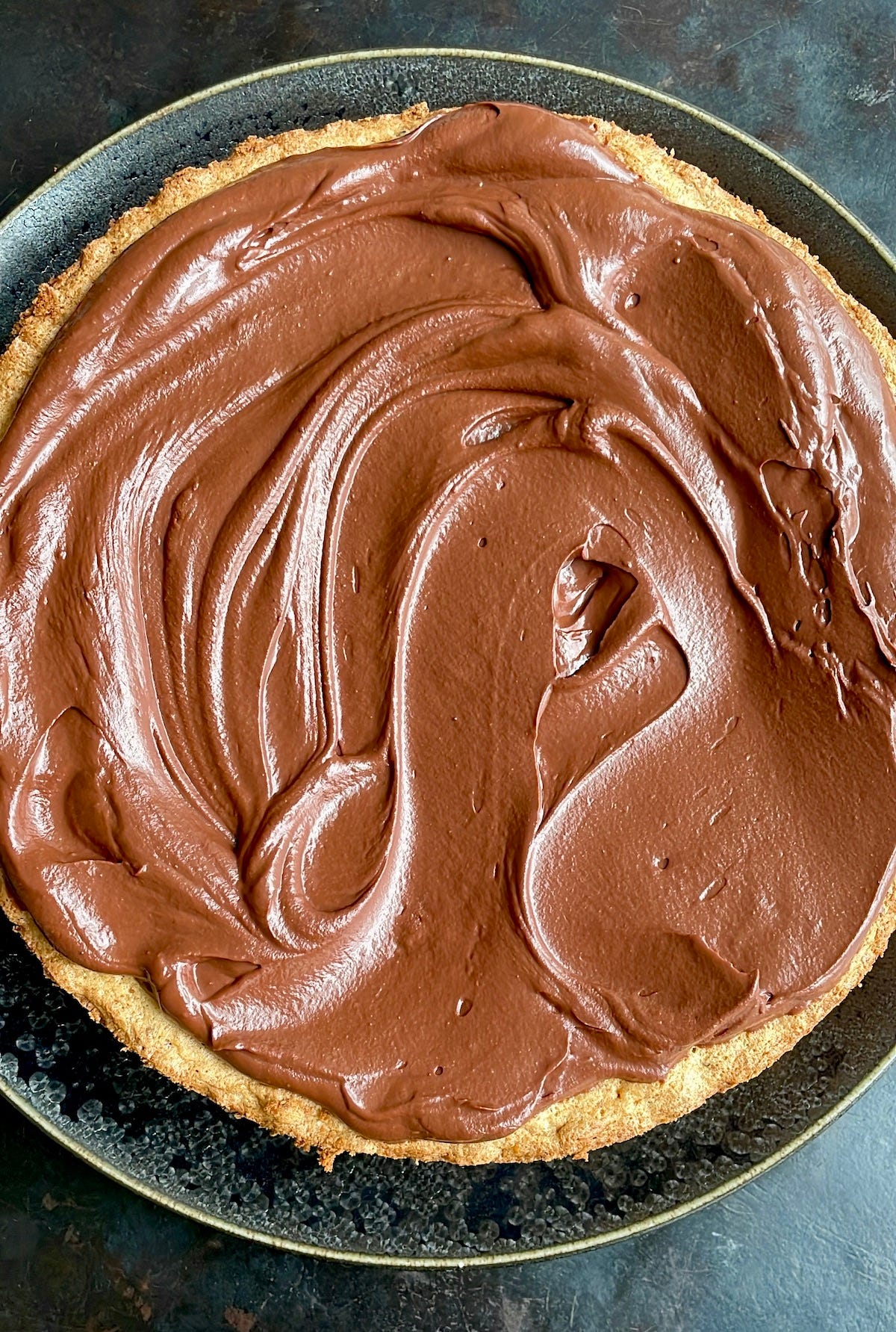
While some people are stricter than others, these are the things to avoid when baking for the holiday:
Passover Baking Rules
No flour of any kind (except nut flours).
No leavening in the form of yeast or other fermented foods. Baking powder and baking soda are permitted, because they are chemical leaveners, but ideally these should be certified Kosher for Passover.
No off-the-shelf extracts, which are alcohol-based. No fermented or leavened foods (and this includes alcohol). Look for K for P extracts or omit them.
The seeds from a vanilla bean can be used, so now is the time to use that bean you've been saving!
If you are visiting someone who keeps a kosher home, use a new or disposable pan, or borrow one of theirs in advance.
Avoid dairy, unless you know that it isn't going to be a kosher meal. Eggs are fine.
Don’t use confectioner’s sugar! It contains cornstarch, which is not permitted.
Technically, chocolate should be certified K for P. Many brands and types are, but double-check the company website.
Not everyone is that strict, but always check. Some chocolates contain milk and soy or sunflower lecithin, which could be a problem.
Here’s a K for P-certified baking chocolate.
If you’re not sure how strict the person whose Seder you’re attending is and can’t find K for P chocolate but want to make this cake, simply top the cake with ground pistachios and raw sugar before baking and skip the ganache!
More Passover recipe ideas
Tasked with making the feast? It’s not too late to make brisket!
Here’s one of my favorite recipes I’ve contributed to the New York Times. (Gift link). There’s coffee in the rub, which is delicious, but if you’re worried about the caffeine, use decaf!
If you’re confused about the different cuts of brisket, check out my tutorial here.
Tired of the same old matzo balls? Try these spaetzle instead. Think of them as freeform matzo meal dumplings, which become light and supple in just 10 minutes (as opposed to the hour or even two hours that traditional matzo balls need to cook). If you’re keeping Passover for the week, the fried version makes for a yummy dinner.
Here’s an elegant baked apple topped with meringue if you’re after a plated dessert. The apples themselves can be baked ahead of time, so you’ll have one less thing to worry about as you prep for the big meal.
You can never go wrong with coconut macaroons for Seder dessert, or as a treat to eat throughout the week. They keep extremely well! These are also a good option if you need to bring a dessert to someone else’s Seder.

